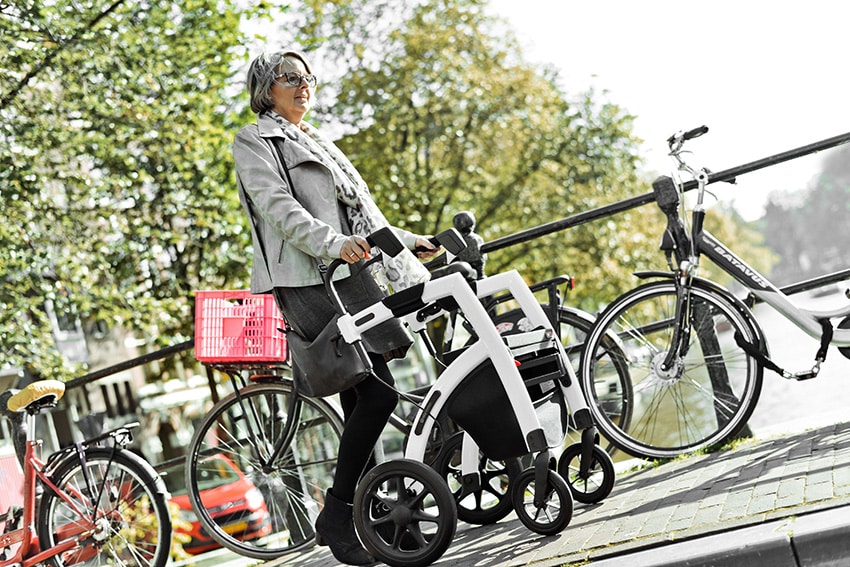It may seem difficult to walk up or down inclines while using a rollator, especially if fully leaning on it for support or when a slope is long or steep. Slopes are increasingly present around buildings, bridges, and parks to enhance accessibility to them.
With practice and patience, walking on slopes with a rollator can be done safely and comfortably; before you know it, the rollator will become an extension of your body.
This is the final lesson in a series of four about how to correctly use a rollator outdoors.
When investing in a rollator, it is important to select a model with an ergonomic and responsive braking system for safety on sloped terrains. The brakes allow you to control the speed of your rollator’s movement. When walking on slopes with a rollator you will need to slow acceleration to advance downhill and prevent it from rolling backwards when going uphill. Your posture, stance, and the degree to which you lean on your rollator for support will dictate how and when you apply the brakes.
Make sure to adjust your brakes periodically and test to ensure they work properly before walking on slopes with a rollator. After doing so, follow the steps below.
Walking up a slope
- Stand close to the rollator and slowly push it up while leaning slightly forward; you will feel your shoulders and forearms working
- Engage the brakes and step forward towards the rollator
- Gradually release the brakes and repeat steps 1 and 2
Walking down a slope
Going down a slope works similarly, but you need to maintain a firm grip as gravity will pull the rollator forward.
- Maintain an erect posture, lean back slightly, and grasp the rollator firmly as it moves forward
- Squeeze the brakes, step towards the rollator, release the brakes and repeat
Tip: The best advice for walking on slopes with a rollator is to consider it as an extension of your body and to deliberately engage the brakes as dictated by the incline and your need for support. If you don’t need much support, it’s not always necessary to brake. Approach the slopes slowly and with care, and always keep your fingers on the brakes so you can squeeze them with short pumps as needed.
